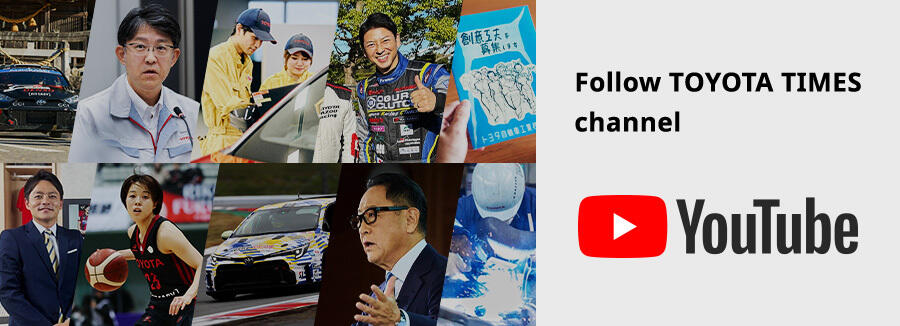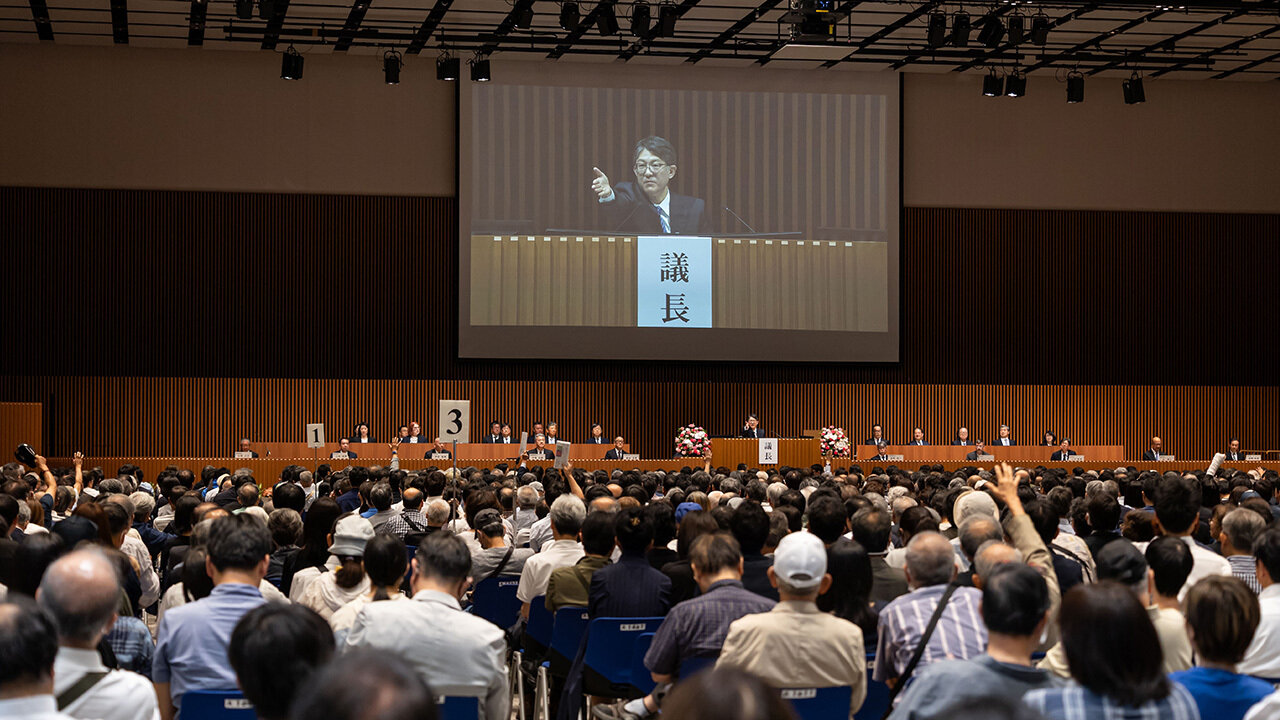
Among the topics raised during the shareholder Q&A session was Toyota's progress in vehicle intelligence and electrification. We share the outlook presented by Vice Presidents Yoichi Miyazaki and Hiroki Nakajima.
The state of all-solid-state batteries
These batteries were previously showcased at the Technical Workshop.
A solid electrolyte allows ions to move more rapidly between the cathode and anode, offering the advantages of shorter charging times, longer range, and more power for BEVs.
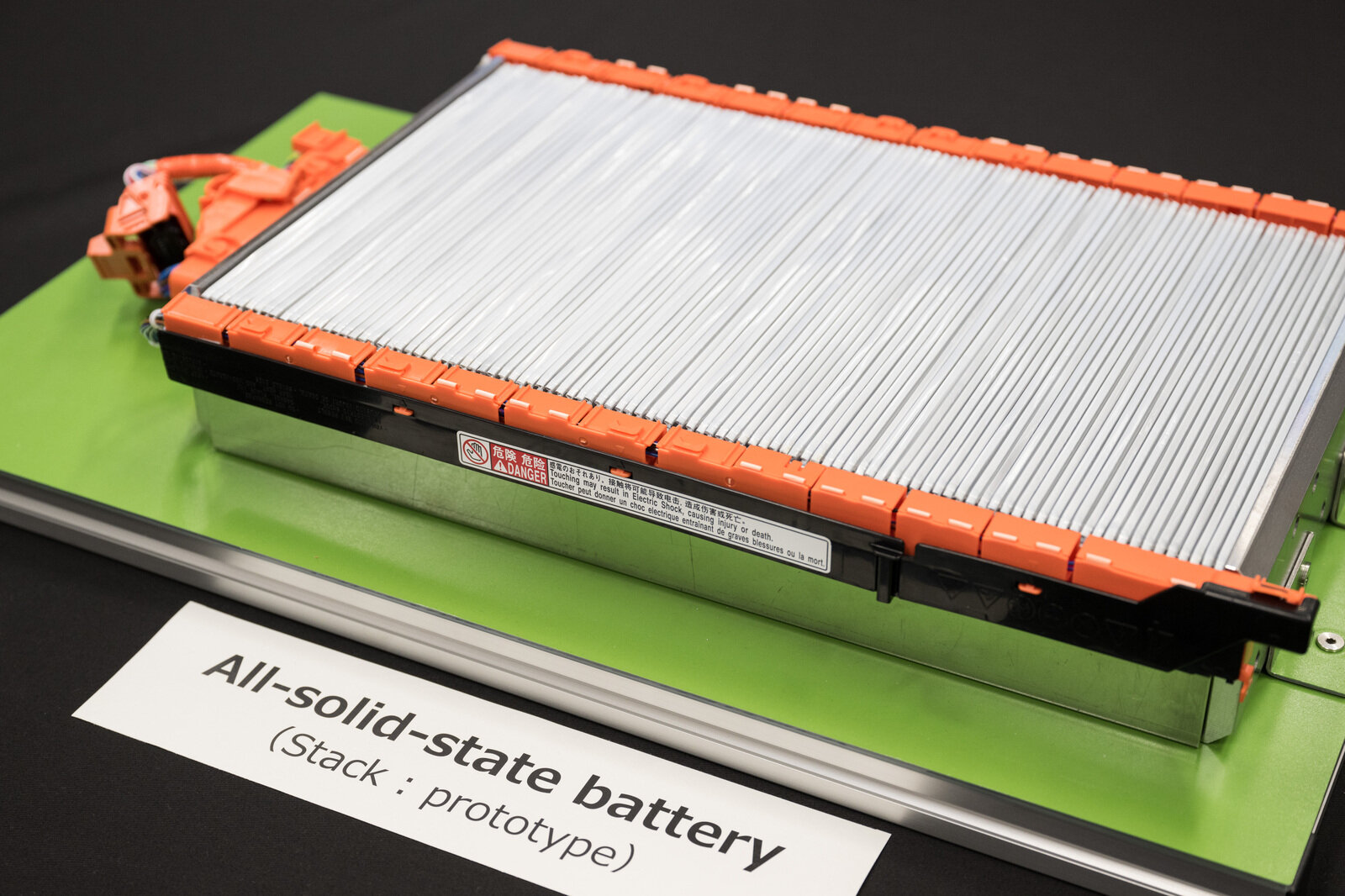
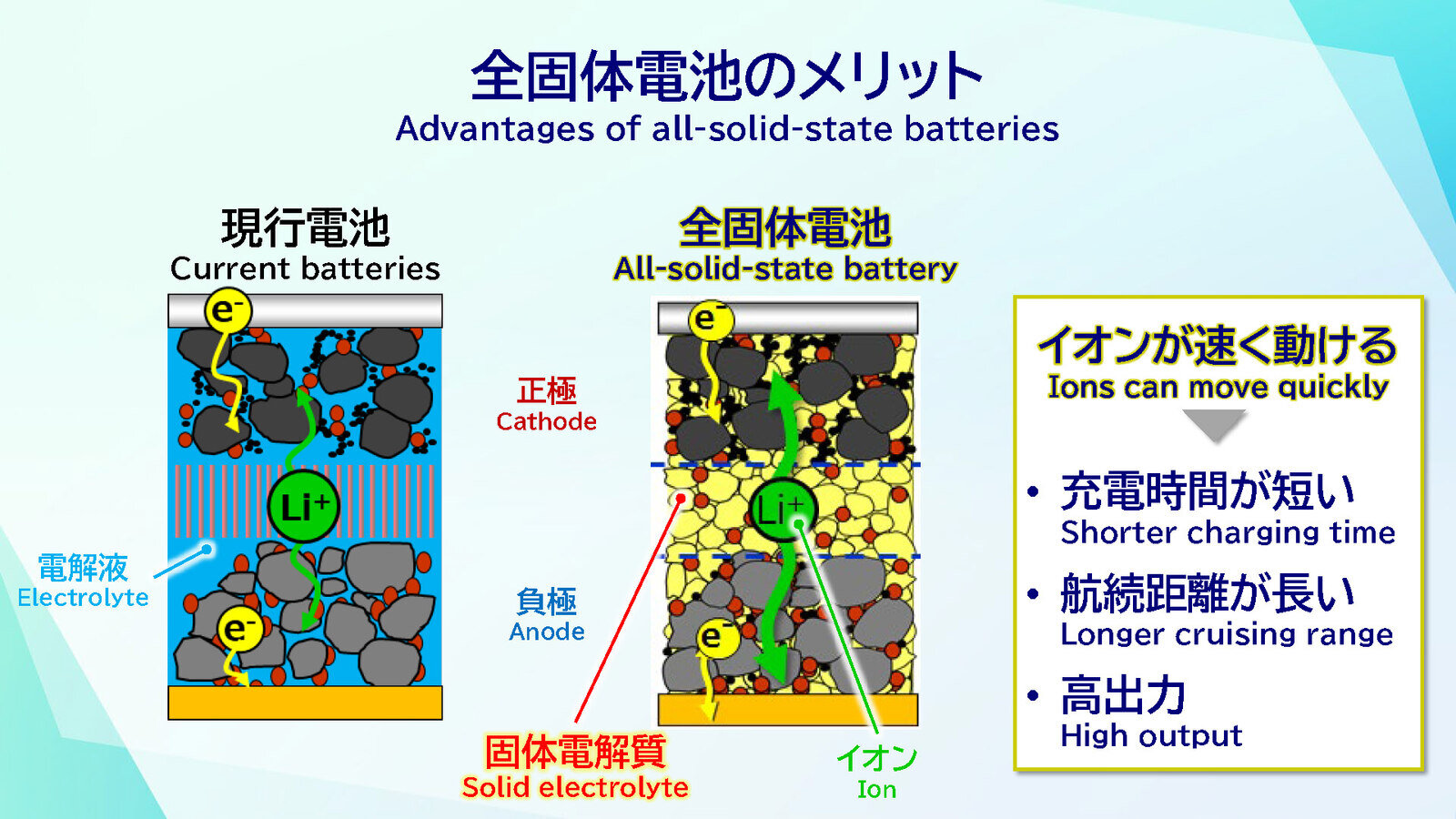
In recent years, Toyota’s battery development efforts have ranged far beyond all-solid-state models.
In the U.S., Toyota Battery Manufacturing, North Carolina (TBMNC) has begun operating as the company’s first overseas battery manufacturing plant, producing batteries for hybrids, plug-in hybrid electric vehicles (PHEV), and BEVs.
In the area of partnership-building, Toyota has announced a collaboration with Idemitsu Kosan and the acquisition of Primearth EV Energy as a wholly-owned subsidiary (renamed Toyota Battery).
It was within this context that Vice President Nakajima fielded a shareholder question about all-solid-state batteries. He began by explaining Toyota’s multi-pathway strategy.
Vice President Nakajima
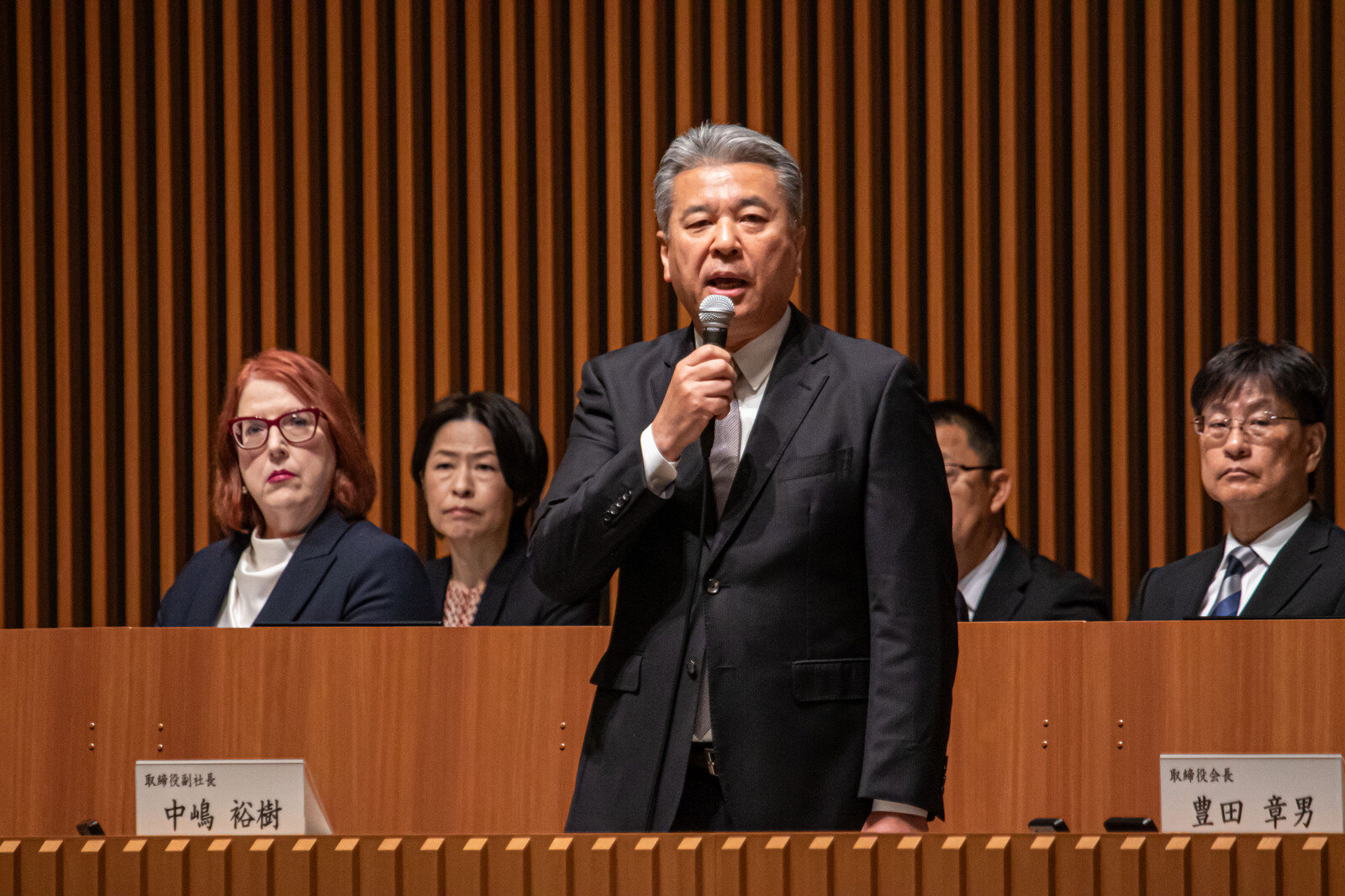
Before I move on to all-solid-state batteries, I would like to talk a little about the multi-pathway strategy that Toyota is pursuing.
Needless to say, it is about delivering the cars best suited to the energy mix of a given country or region, from ICE vehicles to hybrids, plug-in hybrids, and electric vehicles. More recently, we have also been working on FCEVs (fuel cell electric vehicles) and hydrogen-engine vehicles that use hydrogen itself as fuel.
Even for the large number of Toyota vehicles already on the world’s roads, we are striving to offer carbon-neutral fuels made without emitting CO2.
All-solid-state batteries are another key component of this strategy, as we recognize that charging times and range remain among the issues for BEVs.
We are developing all-solid-state batteries with a view to solving these BEV issues in a single stroke. They offer far shorter charging times, higher output for longer range, and greatly improved durability. As it happens, we have another project that is set to start when our all-solid-state batteries come off the line.
If we cannot produce all-solid-state batteries, this project will come to nothing. I believe the question was whether the development will be completed in time, but development is always unpredictable. Frankly, there’s no telling if it will work out or not.
I always take encouragement from Chairman Toyoda’s reminder that “It’s okay to fail.” It is through failure that we gain experience. For young developers, such experience fuels new development challenges. That’s what we hope to facilitate.
Personally, however, I hope we can keep to the promised timeline and deliver all-solid-state batteries as a key element for ushering in the future.
This was the last of the 13 questions raised at this year’s General Shareholders’ Meeting.
During all of his previous responses, Vice President Nakajima had kept his gaze firmly on the shareholder who had made the query; now, he scanned the room before continuing.
“Today, we have received many words of support from individual shareholders. We, the members of Toyota’s development staff and executive team, have taken those words to heart, and they have given us courage to take the next big step forward. We thank you very much.”
After Vice President Nakajima finished speaking, Chairman Toyoda took up the microphone to share his thoughts on Toyota’s push to decarbonize. We will have all the details in a future Toyota Times article.

